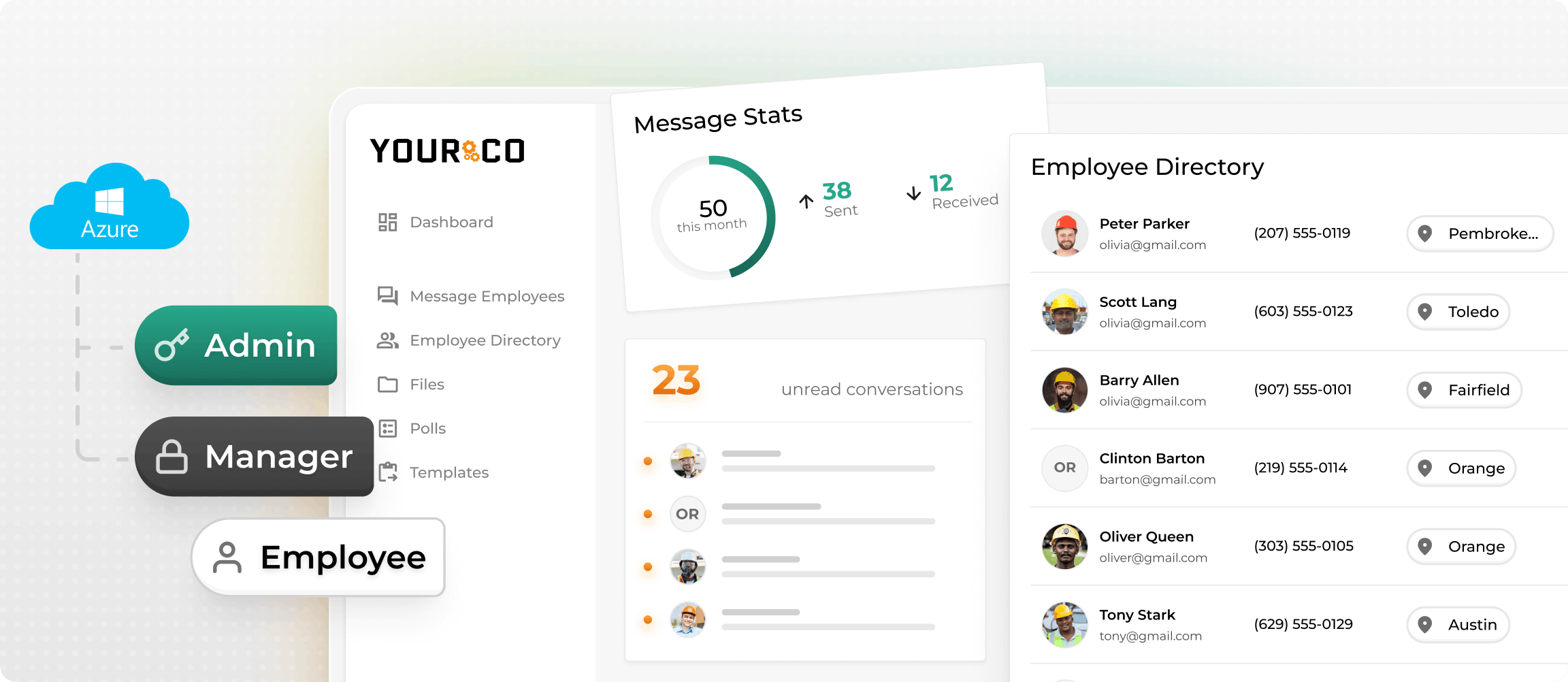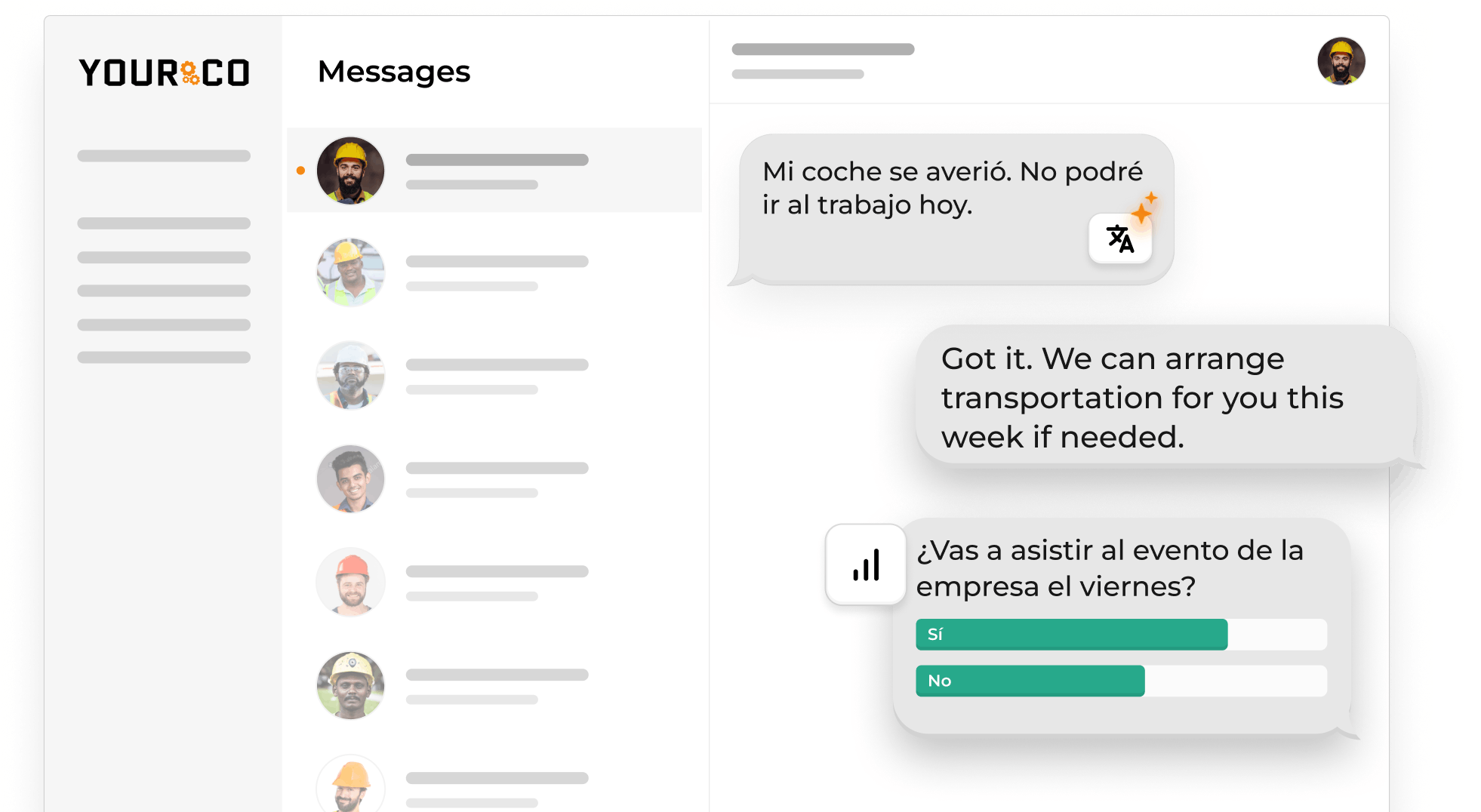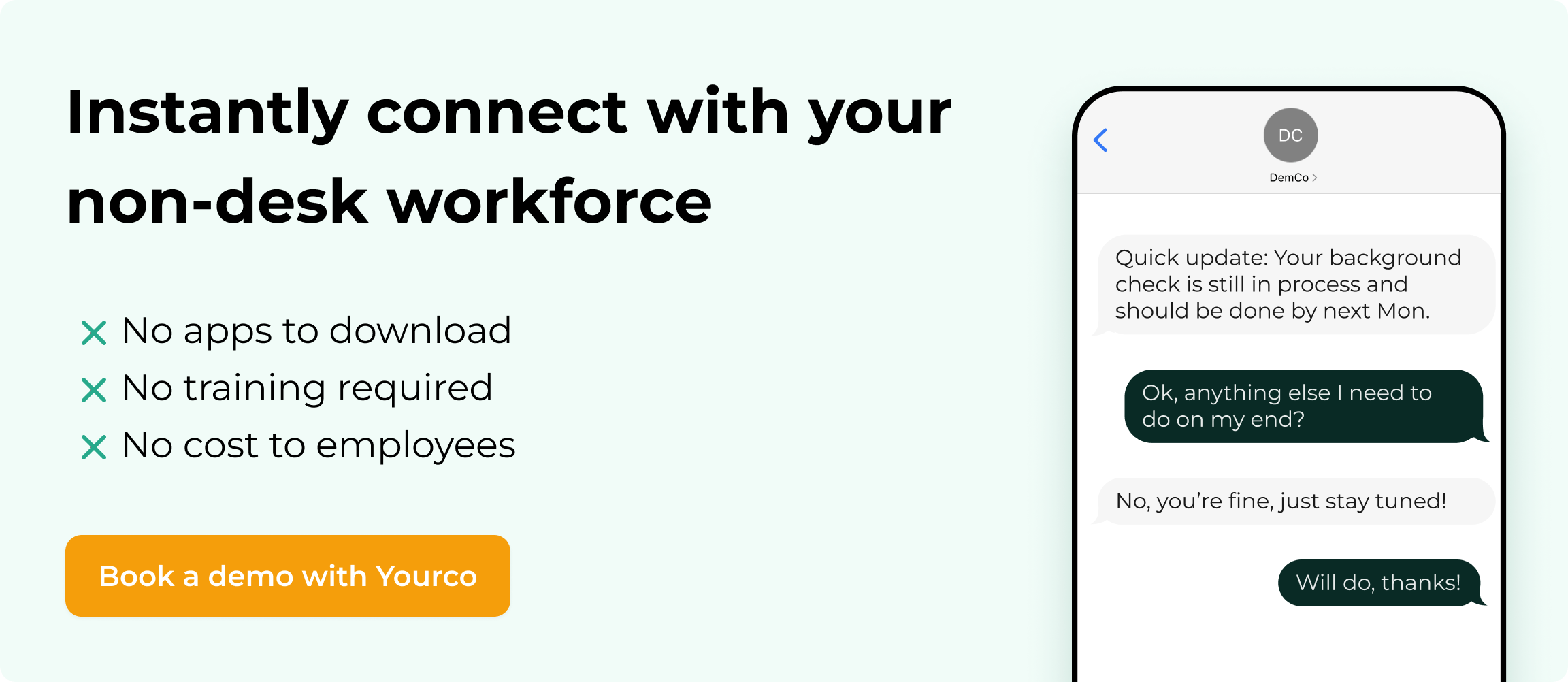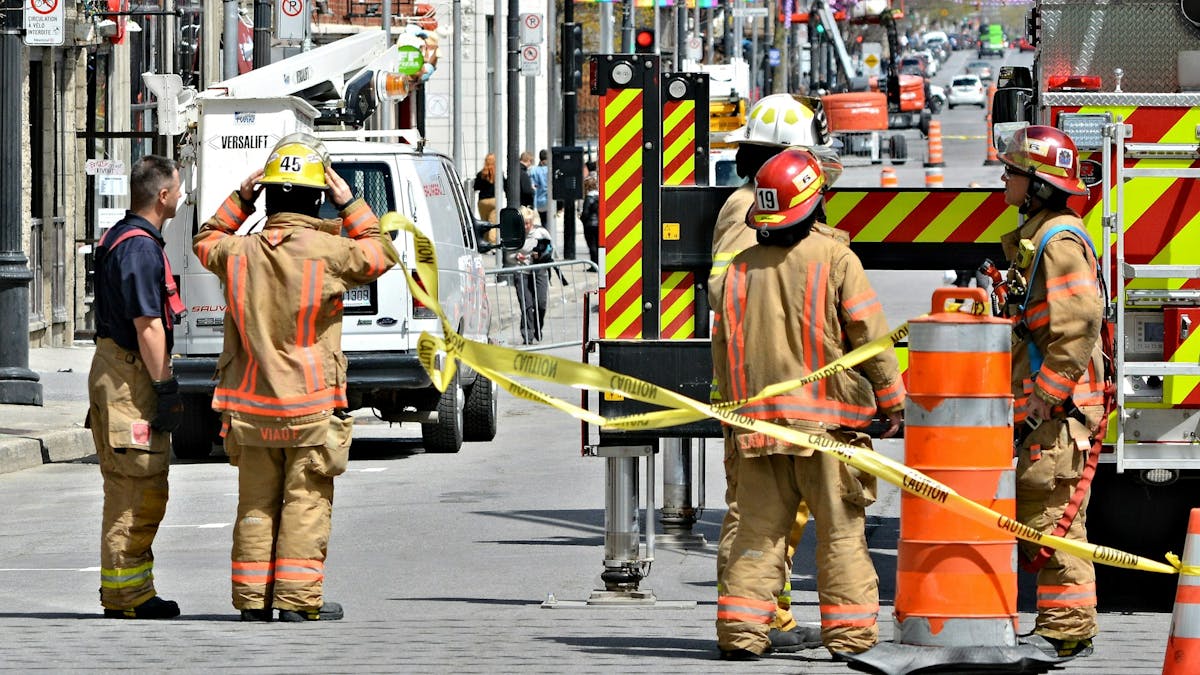10 Templates for Mandatory Evacuation Announcements During Disasters


When an emergency hits, there’s no time to waste. Fires, chemical leaks, or sudden storms can turn a normal workday into chaos within seconds. In those moments, people do not need long explanations. They need short, clear instructions that tell them exactly where to go and what to do.
SMS is the fastest way to deliver those instructions. Texts have a 98% open rate, reach every phone without apps or internet, and most are read right away. That speed and simplicity can save lives.
This guide gives you ten ready-to-use SMS-based alert templates that you can use to keep stress levels down during a mandatory evacuation. Copy them, adjust them to your workplace, and keep them ready so you can act fast when it matters most.
Disclaimer: These templates are examples to help you prepare. They are not a complete emergency plan and do not replace legal or regulatory advice. Always follow instructions from local authorities, since evacuation orders for events like hurricanes often include specific steps. Different situations require different responses, such as a gas leak compared to a power outage. Review your communication procedures with safety experts and legal cou
1. Communicating Immediate Evacuation Orders
Sudden fires, gas leaks, or structural failures demand instant action, as everyone needs to get out now as fast as possible. This template cuts straight to the point in under 160 characters, giving workers exactly what they need to know:
"FIRE in Building 2! Evacuate NOW via East exits. Meet at Lot C. Support coworkers needing help. Reply SAFE when out."
Send it the moment alarms sound. Naming the route and meeting area eliminates confusion when seconds count. Workers know exactly where to go instead of hesitating or following the wrong crowd.
2. Sending Urgent Evacuation Deadlines
Slow-moving threats like approaching storms or planned utility shutdowns still demand urgency, but you can give workers a short window to collect essentials. A clear deadline prevents last-minute scrambles:
"Storm surge coming. Leave site by 3:15 PM. Pack meds & ID. Use Main Gate, meet at Warehouse B parking. Updates every 30 min."
If conditions change, push an updated notification immediately. Outdated timing can put people at risk.
3. Directing Teams to Safe Shelter
Sometimes staying put is safer. Tornado watches or external chemical spills may require taking cover inside. Tell workers exactly where to go and for how long:
"Take shelter NOW—tornado alert. Go to lowest level Rooms 101–106 or North stairwell. Stay until all-clear text. Bring phone & water."
Listing multiple options helps workers choose the closest safe zone instead of everyone rushing to one crowded spot.
4. Coordinating Transportation
Not everyone can drive away. A shuttle schedule keeps employees without vehicles, or those with mobility needs, from getting left behind:
"Buses at Dock 3 every 10 min 2–3 PM. All buses are wheelchair accessible. Need help? Reply AID. All riders meet at Dock 3, head to City Arena shelter."
State the pickup point first, then how to request help. This way no one hesitates to speak up when they need assistance.
5. Providing Alternate Routes
Wildfires or flash floods often block the usual exit. Guiding drivers around hazards prevents gridlock and keeps people safe:
"Avoid Hwy 12—closed. Take Exit 8 to Ridge Rd, then North to the designated evacuation center. Expect heavy rain, drive 25 mph. Call *911 only for emergencies."
Keep monitoring traffic reports and send fresh routes when conditions change.
6. Checking In Post-Evacuation
You need to account for everyone after evacuation. A two-way roll call does this quickly and efficiently:
"Status check: reply SAFE + location (ex: SAFE Lot C). Need help? Reply HELP. No reply in 5 min = follow-up call."
Track responses automatically so managers see who's missing and can send help fast.
7. Enforcing Site Security Restrictions
Curiosity and unfinished tasks draw people back into danger zones. A firm, time-stamped message keeps the site clear until professionals give the all-clear:
"Do NOT re-enter Plant A—gas levels unsafe. Next update at 4 PM. Security posted at gates. Stay at muster areas until you get all-clear text."
Setting expectations for the next update reduces rumors and unauthorized returns.
8. Reaching Multilingual Teams Effectively
Your workforce may speak dozens of languages. Keep sentences short, avoid slang, and use placeholders that can auto-translate into 135+ languages and dialects:
"EVACUATE Building C via South exit. Meet Zone 4. Reply SAFE when out. Next message in 15 min."
After translation, double-check key terms like "exit" and "meet" to make sure they stay clear.
9. Addressing Family and Dependent Concerns
Employees focus better when they know relatives on-site are covered. A quick text about pickup points or childcare relocation eases that worry:
"Kids & visitors moved to Gym Hall, Door 7. Parents meet there by 2 PM or send approved contact. Staff staying with group until released."
Addressing family concerns early improves compliance with the main evacuation order.
10. Giving the Official All-Clear
Once firefighters or safety officers sign off, give the return plan just as clearly as the exit order. An official all-clear prevents scattered, rumor-based re-entry:
"ALL CLEAR: Return to Building 2 at 5 PM via West door. Bring badge for re-check. HVAC running, masks optional. See HR desk for questions."
Including minor precautions like mask use reassures staff that conditions are truly safe and managed.
Best Practices to Streamline Mandatory Evacuations Via SMS
SMS alerts only work if they’re clear, fast, and trusted by employees. These best practices help you set up a system that drives quick, confident responses when it matters most.
Keep Messages Short and Action-Focused
Clear, pre-written templates only work if every message lands quickly and makes sense to the people reading it. The foundation of effective emergency messaging starts with keeping each alert under 160 characters so phones show the whole instruction at a glance.
Short, direct phrasing also lets you hit the critical who, what, where, and when without filler. That brevity matters because most texts are read within minutes, so the first line should always spell out the action employees must take.
Build Trust Through Two-Way Communication
Beyond brevity, trust is essential. Include a recognizable sender tag or unique code to build credibility and avoid confusion. When possible, add a simple reply instruction, such as "Reply SAFE when outside," to turn the alert into a live roll call. Two-way checks give you instant accountability and help locate anyone who needs help.
Test Templates Before Emergencies Strike
Before an emergency hits, test each template with multilingual team members. Quick drills using those same messages reveal confusing phrases and confirm exits match exactly what the text describes. During these rehearsals, make sure managers know who can press "send" and how to access the templates fast, as lost seconds create real risk.
Maintain Consistent Emergency Communication Systems
Establishing a systematic approach ensures consistency across all emergency communications. The foundation starts with preparation and regular updates:
- Store templates in one shared folder everyone can reach, then review wording quarterly or after any drill
- Update contact lists and language preferences regularly to maintain accuracy, especially when integrating with your existing HR systems for automatic employee data syncing
- Log each live alert and response for after-action reviews, and rotate drills across shifts so night crews get the same practice
These habits ensure every employee receives, understands, and acts on evacuation orders without hesitation, even in the most chaotic moments.
Protect Your Team with Instant Emergency Communication
When you need everyone off-site fast, every second counts. Text messaging reaches more people because it works on any phone and gets read immediately. When you combine that reliability with clear, pre-written templates, you eliminate the scrambling that can slow down an evacuation.
Yourco makes emergency response simple and effective. You can load evacuation templates once and send them the moment an alarm sounds, knowing the right information reaches every phone. The platform keeps messages short and clear, so people don't waste time trying to understand what to do.
Automatic translation into 135+ languages and dialects ensures every worker knows just what to do. Two-way confirmation tracking shows who is safe and who still needs help, while instant scaling across multiple sites eliminates the need to juggle contact lists. Pure text delivery means no apps, logins, or internet required, which is critical during an evacuation.
Ready to strengthen your emergency response? Try Yourco for free today or schedule a demo and see how the right workplace communication solution can keep your team informed and moving in the right direction when it matters most.
Frequently Asked Questions
How do I customize evacuation SMS templates for my specific team or facility?
Customizing evacuation templates involves tailoring the messages to include specific information about your facility's layout, emergency contacts, and any unique processes. Focus on including clear instructions applicable to your facility's setup.
For example, mention specific exit routes or assembly points. Keep messages straightforward and ensure that any template aligns with the unique hazards or operational workflows of your facility.
Can SMS templates work effectively across multiple locations with different evacuation routes?
Yes, text templates can be very effective across different sites as long as they are customized to reflect the conditions and exit strategies unique to each location.
With Yourco, you can segment your contact lists based on location and deliver site-specific instructions within your templates. This ensures all employees receive relevant information pertinent to where they are and what they need to do in an emergency.
How does translation help in multilingual workforces during emergencies?
Translation features ensure that every employee understands the evacuation instructions, minimizing confusion during a crisis. Yourco's platform supports over 135 languages and dialects, making it accessible to diverse teams. This inclusivity ensures everyone can quickly comprehend the messages, facilitating a swift and organized evacuation process.
What's the best way to confirm that employees are safe after an evacuation?
The most effective method is to employ interactive roll calls, where employees can respond with a simple code like "SAFE" to confirm their status. These systems not only gather immediate feedback but also help identify anyone who might require assistance. Regular updates on their status can reinforce accountability and improve overall safety management.
How frequently should we test our evacuation messaging system?
You should conduct drills and test your messaging system at least a couple of times a year, or more frequently, depending on the complexity of your facility and the potential risks. Regular testing helps refine your processes, ensures that messages are effectively understood, and keeps employees familiar with evacuation procedures, ultimately boosting efficiency during actual emergencies.





